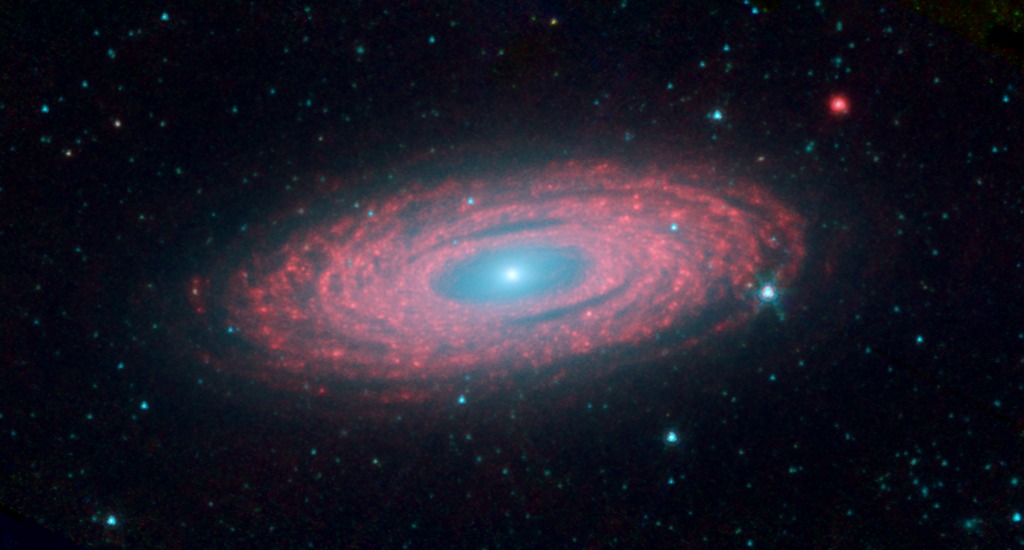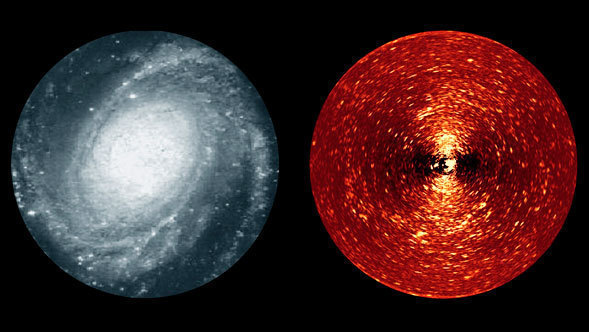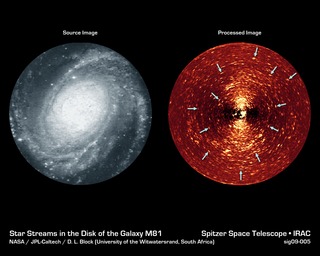
Credit: NASA/JPL-Caltech
Observation • April 30th, 2009 • sig09-006
sig09-006
This latest image from NASA's Spitzer Space Telescope is of the spiral galaxy, NGC 2841. Located about 46 million light-years from Earth in the constellation Ursa Major, this spectacular galaxy is helping astronomers solve one of the oldest puzzles in astronomy: Why do galaxies look so smooth, with stars sprinkled evenly throughout? An international team of astronomers has discovered that rivers of young stars flow from their hot, dense stellar nurseries, dispersing out to form the large, smooth distribution that we see in spiral galaxies like this one.
This image is a composite of three different wavelengths from Spitzer's infrared array camera . The shortest wavelengths are displayed in blue, and mostly show the older stars in NGC 2841, as well as foreground stars in our own Milky Way galaxy. The cooler areas are highlighted in red, and show the dusty, gaseous regions of the galaxy. Blue shows infrared light of 3.6 microns, green represents 4.5-micron light and red, 8.0-micron light. The contribution from starlight measured at 3.6 microns has been subtracted from the 8.0-micron image to enhance the visibility of the dust features.
About the Object
- Name
- NGC 2841
- Type
- Galaxy > Type > Spiral
- Galaxy > Activity > Normal
- Distance
- 46,000,000 Light Years
- Redshift
- 0.002128
Color Mapping
| Band | Wavelength | Telescope |
| Infrared | 3.6 µm | Spitzer IRAC |
| Infrared | 4.5 µm | Spitzer IRAC |
| Infrared | 8.0 µm | Spitzer IRAC |
Astrometrics
- Position (J2000)
- RA =9h 22m 2.5s
- Dec = 50° 58' 38.8"
- Field of View
- 10.9 x 5.9 arcminutes
- Orientation
- North is 51.0° right of vertical






